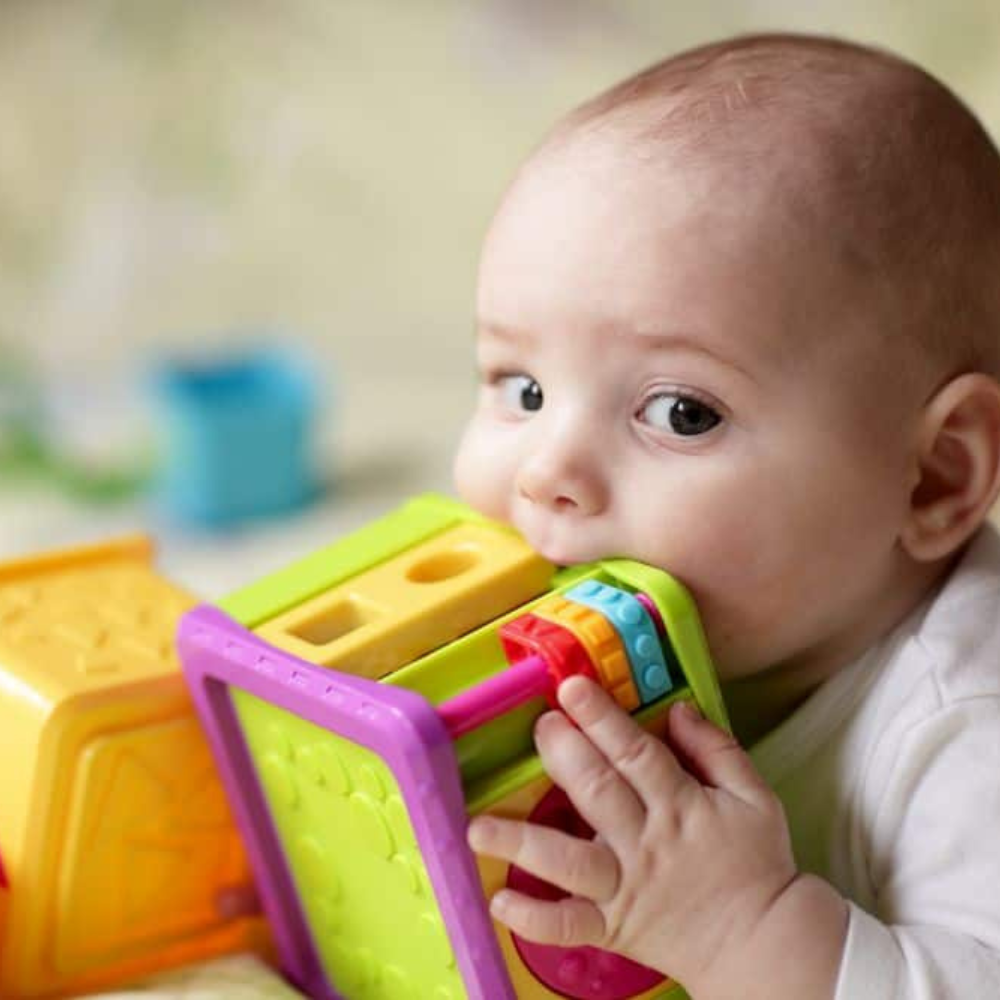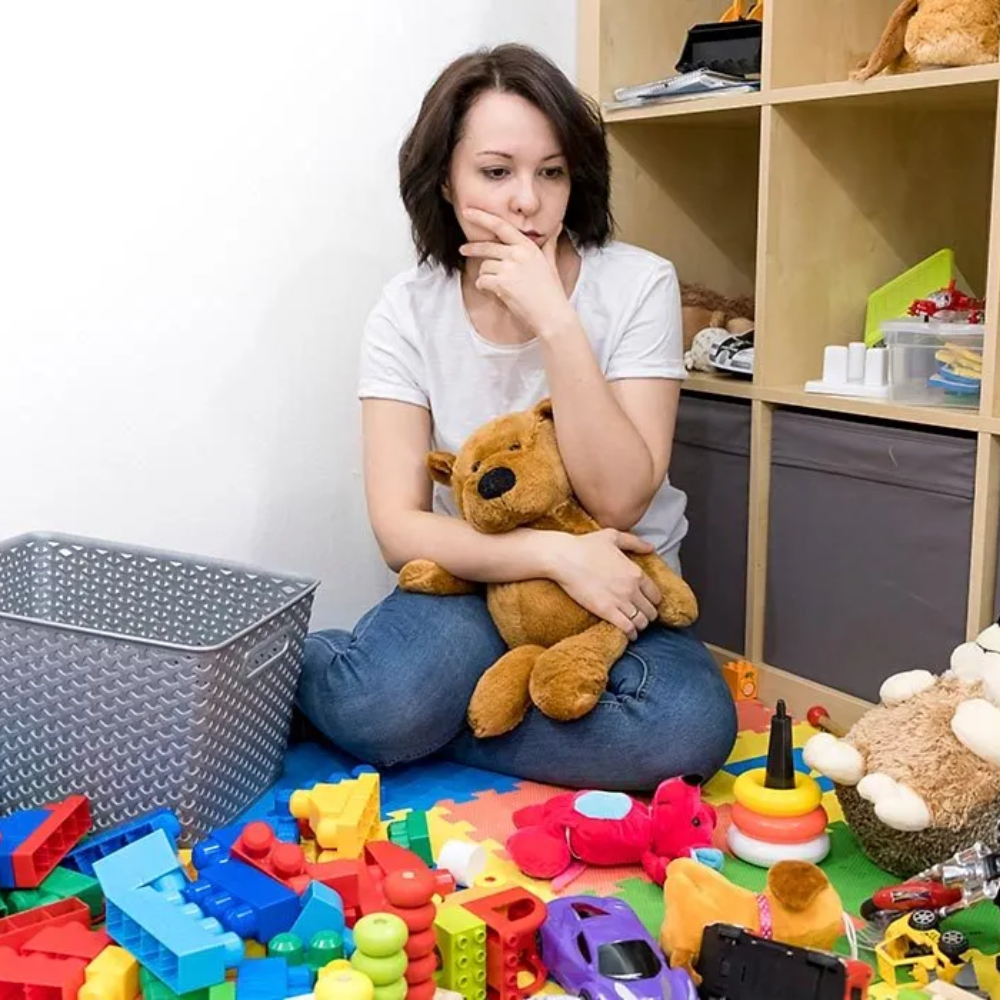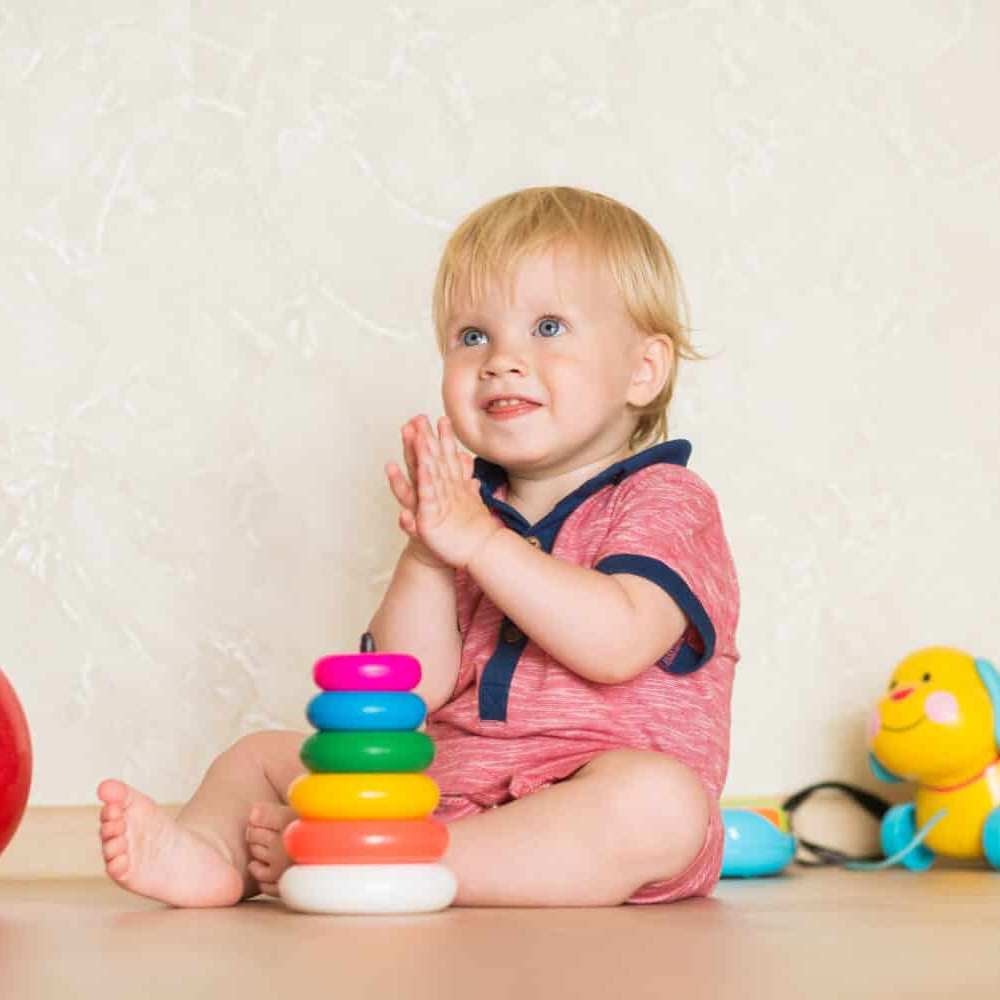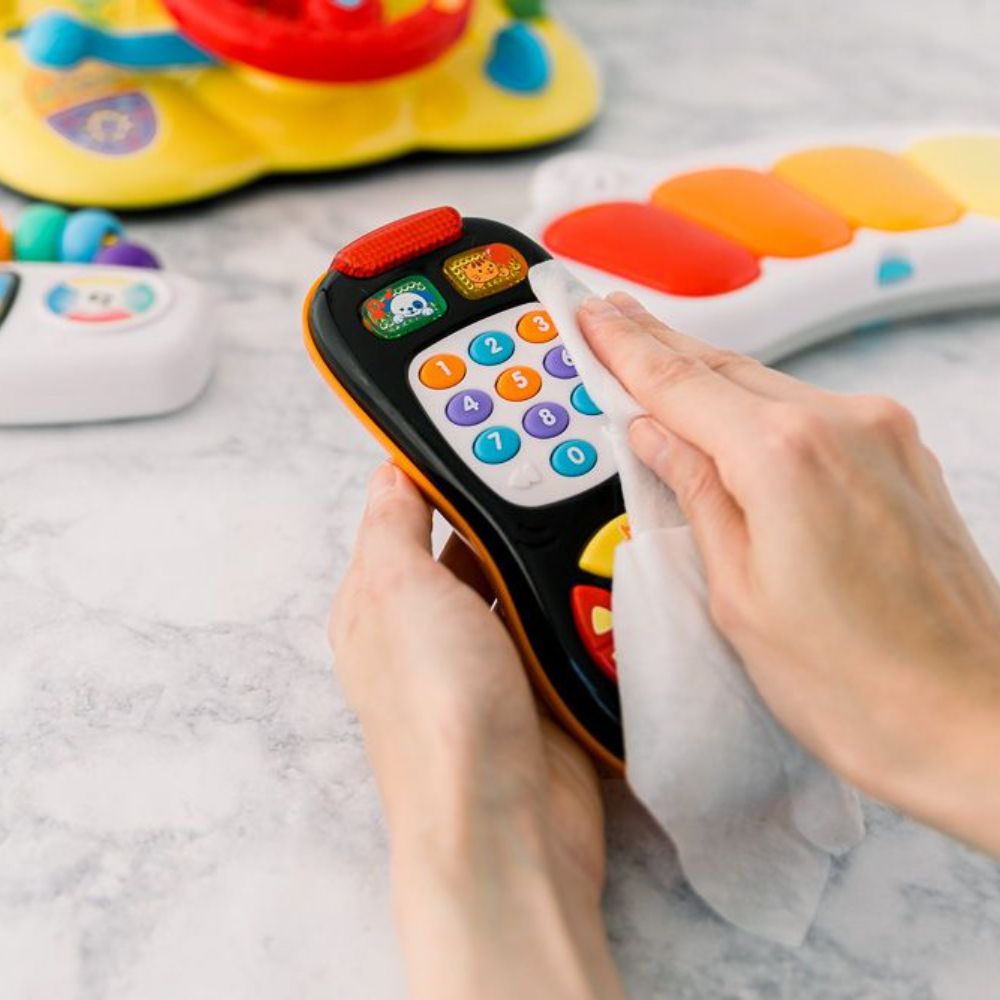Babies are known to put everything in their mouths, whether it's a toy or not. As parents, we want to ensure our little ones play with clean and safe toys. Regularly disinfecting your baby's toys is essential for maintaining good hygiene and preventing the spread of germs and illnesses.
In this guide, we will discuss the importance of disinfecting baby toys, when and how often you should do it, and different methods for effectively cleaning and disinfecting various types of toys. By following these simple steps, you can ensure that your baby's favorite playthings are always germ-free and safe for them to use.
What is the Importance of Disinfecting Baby Toys?

Disinfecting baby toys is crucial for a few reasons. First and foremost, babies have weaker immune systems compared to adults, making them more susceptible to illnesses and infections. They also put everything in their mouths, increasing the chances of ingesting harmful bacteria and viruses.
Moreover, toys can easily pick up germs from various sources such as other children, floors, and even household surfaces. Without proper disinfection, these germs can continue to thrive on the toy's surface and potentially cause harm to your baby's health.
Regularly disinfecting your baby's toys can also help prevent the spread of sickness within your household. Babies often share toys with other children, and if one child is sick, the germs can easily transfer to your baby's toys and make them sick as well.
Therefore, it's essential to make disinfecting baby toys a part of your regular cleaning routine to keep your little one healthy and safe.
How To Disinfect Baby Toys?

The method and frequency of disinfecting baby toys may vary depending on the type of toy, material, and level of use. However, here are some general tips to keep in mind when cleaning and disinfecting your baby's toys:
Always start by washing
Before disinfecting any baby toy, it's essential to start with a thorough wash. This step helps to remove any visible dirt, dust, or residues that could interfere with the disinfection process. For plastic, rubber, and silicone toys, you can wash them by hand using warm water and mild soap. Make sure to scrub all surfaces, including hard-to-reach areas and small crevices, where germs can accumulate. Rinse the toys thoroughly to ensure no soap residue remains.
For fabric toys and stuffed animals, check the care label first. Most of these can be safely washed in a washing machine using a gentle cycle and mild detergent. Placing them in a mesh laundry bag can help protect them during the wash. After washing, air dry the toys completely before proceeding with disinfection.
Choose a Suitable Disinfectant
After washing and drying the toys, it's time to disinfect them. Various disinfectants are available on the market, such as bleach solutions, hydrogen peroxide, and alcohol-based sprays. It's essential to read the labels and choose a suitable option for your baby's toys. Some options may not be safe for certain materials or may require dilution before use.
You can also opt for natural alternatives like vinegar or tea tree oil solutions, which are effective against bacteria and viruses. These options are safe for babies and the environment, making them a popular choice among parents.
When using any disinfectant, make sure to follow the instructions carefully and allow enough contact time for it to be effective. After disinfection, rinse or wipe down the toys with clean water before giving them back to your baby.
Follow the manufacturer's instructions
While disinfecting baby toys, it's crucial to follow the manufacturer's instructions if available. Some toys may have specific cleaning and disinfection guidelines that you should adhere to. For example, electronic toys or battery-operated toys may require special care when washing or disinfecting.
If there are no clear instructions, it's best to err on the side of caution and use gentle methods and products. Harsh chemicals or rough scrubbing can damage the toy or leave behind harmful residues that could harm your baby.
Plus, following the manufacturer's instructions can help prolong the life of the toy and ensure it continues to be safe for your baby to play with.
Use natural alternatives
As mentioned earlier, natural alternatives like vinegar or tea tree oil can be effective for disinfecting baby toys. These options are not only safe for babies but also non-toxic and environmentally friendly.
Vinegar is a natural disinfectant that kills most bacteria and viruses effectively. Simply mix equal parts water and vinegar, place the toys in the solution, and let them soak for a few minutes before rinsing with clean water.
Tea tree oil is known for its antibacterial properties and can be diluted with water to create a safe and effective disinfectant spray. You can use it to wipe down toys or spray them and let them air dry.
Using natural alternatives can give you peace of mind knowing that your baby's toys are free from harmful chemicals and safe for their use. Plus, they are readily available and affordable compared to store-bought disinfectants.
So these are some methods for effectively cleaning and disinfecting baby toys. By incorporating these tips into your regular cleaning routine, you can ensure that your little one's favorite playthings stay germ-free and safe for them to enjoy. Remember to always prioritize your baby's health and well-being by keeping their toys clean and disinfected.
So these are some methods for effectively cleaning and disinfecting baby toys. By incorporating these tips into your regular cleaning routine, you can ensure that your little one's favorite playthings stay germ-free and safe for them to enjoy.
Top Toys for Infants and Toddlers

While we all want to keep our babies' toys clean and safe, selecting the right toys is just as important. Here are some of the top toy options for infants and toddlers:
Montessori Toys
Montessori toys are designed to stimulate your child's natural curiosity and promote hands-on learning. These toys are typically made from natural materials, such as wood, and encourage problem-solving, fine motor skills, and independent play. Examples of Montessori toys include stacking blocks, shape sorters, and simple puzzles.
These toys focus on fostering creativity and cognitive development without overwhelming your child with electronic sounds or flashy lights. By providing an array of Montessori toys, you can support your child's growth and development in a peaceful and focused environment.
Outdoor Toys
Outdoor play is essential for infants and toddlers as it promotes physical activity and sensory development, and allows them to explore their surroundings. Some popular outdoor toys for babies include mini slides, water tables, and ride-on toys. For toddlers, you can consider adding a sandbox or tricycle to your outdoor play area.
Before purchasing any outdoor toy, make sure it's age-appropriate and meets safety standards. Also, be mindful of the weather conditions and supervise your child during outdoor playtime. Additionally, regularly clean and disinfect these toys to keep them free from dirt and germs.
Soft and Textured Toys
Soft and textured toys are perfect for babies as they provide tactile stimulation which helps with sensory development. Look for plush toys made from soft fabrics like cotton or silicone teethers that have different textures for your baby to explore. These types of toys also make great cuddle buddies for nap time!
When choosing soft and textured toys, make sure they are age-appropriate and safe for chewing. Avoid anything with small parts that can be a choking hazard. Regularly washing these toys in the washing machine or by hand will help keep them clean and germ-free.
Bath Toys
Bath time can be a fun and bonding experience for babies, especially when they have bath toys to play with. From rubber ducks to floating boats, there are endless options for bath toys that can entertain your little one while also promoting hand-eye coordination and sensory development.
To ensure these toys stay clean and safe, make sure they are free from mold and mildew. After each use, squeeze out any excess water and let them air dry before storing them. It's also a good idea to regularly disinfect bath toys using natural methods or mild soap and hot water.
Summer Toys
With warmer weather comes the opportunity for outdoor playtime with summer toys! For infants, consider getting a baby pool or splash pad for some fun water play. Toddlers may enjoy sand and water tables, bubble machines, or simple backyard games like ring toss or bean bag toss.
When choosing summer toys, make sure they are age-appropriate and safe for your child. Always supervise outdoor playtime and regularly clean and disinfect these toys to keep them germ-free. Additionally, ensure that any water play is done in a safe and supervised environment to prevent accidents.
These are the top toys for infants and toddlers that not only provide entertainment but also promote development and exploration. By keeping these toys clean and safe, you can ensure that your child has a fun and healthy playtime experience.
Mistakes to Avoid When Cleaning and Disinfecting Toys

While cleaning and disinfecting toys is important, there are some common mistakes that parents may make. Here are some things to avoid when keeping your child's toys clean:
- Using harsh chemicals: Avoid using harsh chemicals or bleach to clean toys as they can be harmful to your child's health if not rinsed off properly. Also, they can damage the toys' surfaces and cause discoloration.
- Not following manufacturer's instructions: Always follow the manufacturer's instructions for cleaning and disinfecting toys. Some may require specific methods or materials to maintain their quality.
- Skipping hard-to-reach areas: Toys with nooks and crannies can be challenging to clean, but it's essential to pay attention to these areas to remove any hidden dirt or bacteria.
- Not regularly washing soft toys: Soft toys are often forgotten when it comes to regular washing. However, they can accumulate a lot of dirt and germs from constant play and should be washed regularly.
- Not drying toys properly: After cleaning and disinfecting, make sure to dry the toys thoroughly before storing them to prevent mold and mildew growth. Use a clean cloth or let them air dry completely.
By avoiding these mistakes, you can ensure that your child's toys are safe and clean for playtime. Regularly cleaning and disinfecting toys not only helps keep germs at bay but also extends the life of the toys.
FAQs
How can I effectively clean baby toys made from hard plastic?
To clean hard plastic toys, wash them with soap and warm water to remove any visible dirt. For a deeper clean, you can use a solution of diluted bleach (1 tablespoon of bleach per gallon of water) to sanitize them. Ensure the toys are completely dry before giving them back to your child.
What is the best method to disinfect plush baby toys?
To disinfect plush baby toys, first check the care label to see if they are machine washable. If they are, launder them in the washing machine using warm water and mild detergent on a gentle cycle. For plush toys that cannot be washed, spot clean with a cloth dampened with a soap and water solution, then air dry.
How do I clean and maintain plastic baby toys?
To clean and maintain plastic baby toys, use warm soapy water and a clean cloth or sponge to wipe them down. For disinfecting, you can use a vinegar and water solution (equal parts) or a mild bleach solution if the toys are very soiled. Rinse thoroughly with clean water to ensure no residue is left.
What is the safest way to clean baby bath toys?
To clean bath toys and prevent mold growth, mix a solution of 1/2 cup white vinegar per gallon of warm water and soak the toys for about an hour. After soaking, squeeze out any solution from inside the toys and rinse them under warm water. Allow the toys to air dry completely.
Can I use alcohol wipes to clean electronic baby toys?
Yes, you can use alcohol wipes to clean electronic baby toys. Gently wipe the exterior surfaces without allowing moisture to enter any openings or battery compartments. Alcohol wipes are effective for sanitizing and do not leave a residue.
What precautions should I take when cleaning wooden baby toys?
When cleaning wooden toys, avoid soaking them as water can cause the wood to swell and split. Instead, wipe them with a cloth dampened with a mixture of mild soap and water. Wipe the toys again with a dry cloth and let them air dry completely to prevent moisture retention.
Conclusion
In conclusion, providing a variety of age-appropriate toys for your child is essential for their development and playtime enjoyment. When choosing and caring for these toys, remember to prioritize safety and cleanliness to provide a healthy environment for your child.
With the tips and recommendations provided in this guide, you can create a fun and stimulating play space for your little one while also promoting their growth and well-being.
So go ahead and start building your collection of Montessori-inspired toys today! Remember to regularly clean and disinfect them to ensure they remain safe and germ-free. Happy playing!
Subscribe to our email newsletter and unlock access to members-only content and exclusive updates.

Comments